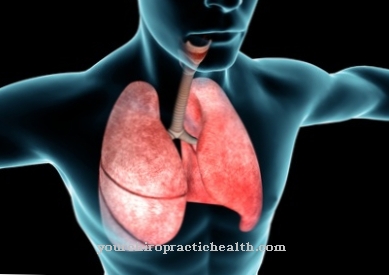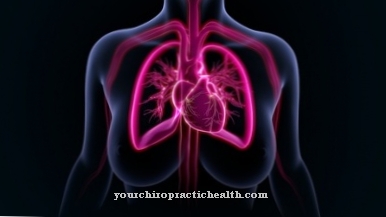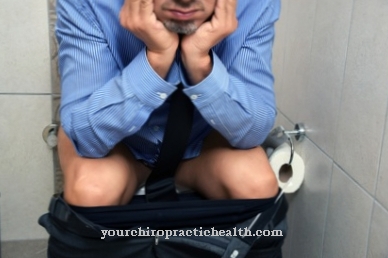As Pronation the inward turning of the forearm and foot is called. This is a countermovement to supination.
What is the pronation?

The term pronation is used in medicine and anatomy to describe certain movements of limbs such as the forearm and foot. The name comes from Latin. In the German translation, pronation means "turn forward" or "lean forward". Supination forms the opposite sequence of movements to pronation.
A distinction is made between pronation of the hand or forearm and pronation of the foot.
Function & task
The ulna (ulna) and radius (spoke) bones are important for the pronation of the forearm. If there is a pronation movement of the forearm, the arm is rotated in the inward direction. If the arm is outstretched and the palm is pointing upwards, a rotation takes place so that the palm is pointing downwards while the thumb moves in the direction of the body. In the course of this movement, the hand and forearm rotate.
The pronation of the forearm is made possible by the respective forearm muscles. Their approach or origin can be found on the spoke and ulna. The muscles in question are the brachioradialis muscle (upper arm spoke muscle), the pronator teres muscle (round inward turner) and the pronator quadratus muscle (square inward turner). In addition, the joints articulatio radioulnaris distalis and articulatio radioulnaris proximalis also contribute to the movement.
Pronation also plays an important role in the foot, where it occurs at the ankle. Immediately after the foot hits the ground, it turns inward. In this process, the outside of the foot moves in the upward direction, while the middle side of the foot points down. There is no movement at the heel. This causes the foot to bend inwards.
The muscles involved in pronation of the foot include the extensor digitorum longus (long toe extensor), the peroneus brevis (short fibula muscle) and the peroneus longus muscle (long fibula muscle). The latter two muscles are the main muscles of foot pronation.
The pronation of the foot is superimposed by a dorsiflexion (movement towards the back of the foot) and an abduction (spreading the leg).This can be traced back to the position of the axis of motion of the lower ankle. If the three movements dorsiflexion, abduction and pronation are superimposed, it is referred to as eversion.
Pronation dampens foot movements and represents a natural movement in the inward direction. Pronation plays an important role in running. The manufacturers of running shoes produce various models that are suitable for neutral foot runners, supinators and overpronators.
Illnesses & ailments
Pronation can have a negative effect under certain circumstances. In such cases there is talk of overpronation. This results in an incorrect load on the foot while running. If the foot turns inwards during the rolling movement, this is not a problem and is considered normal. However, if the load on the insole is more intense than the load on the outsole, it is overpronation. This can sometimes lead to severe discomfort to the tendons and knees, which is particularly true for runners.
Overpronation is usually caused by a congenital arched arched foot. The outer edge of the foot rises a little while the inner edge of the foot lowers a little. The reasons for this misalignment are foot muscle insufficiency and a weak ligamentous apparatus. Not infrequently, runners who have knock knees also tend to overpronate.
Since most women have a wider pelvic position, overpronation is more common on average. Other possible causes include flat feet, obesity and intense symptoms of fatigue. It is not uncommon for runners to suffer from overpronation who have just started running and whose supporting apparatus has not been adequately trained. Overpronation of the foot can be recognized by excessive wear on the inside of the shoes, which is particularly true for the big toe area.
Another possible misalignment, which occurs much less often than overpronation, is underpronation. Experts also refer to it as supination. The load does not lead inwards, but outwards in the opposite direction. The supinators tend to roll outwards when running. You can see an underpronation of higher wear and tear on the outside of the running shoe. A hollow foot is a possible cause of underpronation. This places increased weight on the outer instep of the foot. As a result, there is an increased risk of tendinitis and periosteum infections.
If there is overpronation, there are ways to effectively counteract the misalignment. This includes the insertion of special pronation supports that reduce inward rolling. However, natural pronation should not suffer from the pronation support. Numerous producers of running shoes now offer a variety of suitable models. However, if there is a pronounced overpronation, it is recommended to wear an insert that an orthopedic surgeon makes individually.
Treatment of the causes of overpronation is also possible. For this purpose, the affected person specifically trains their foot and calf muscles to strengthen them. In addition, the running technique should be improved through professional training.

















.jpg)







.jpg)


